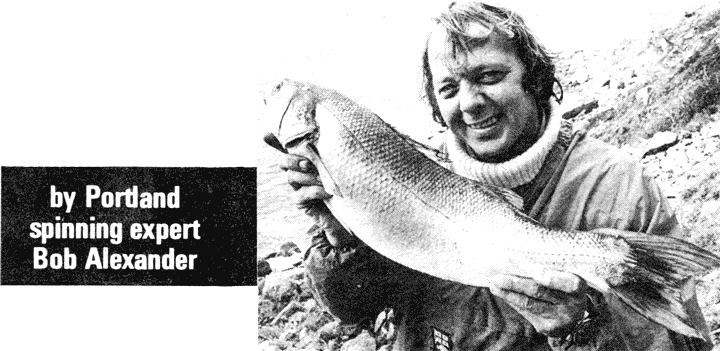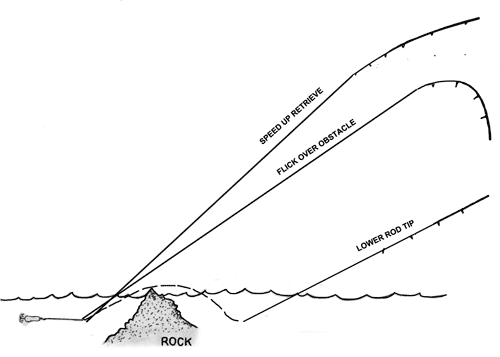(4) June 1975. How to spin and where.

During the spring I always feel restless. The new season is beginning and the anticipation starts to build up.
Since Christmas I've gone through my tackle, cleaned and stripped my reels, replaced hooks on spinners and put new rings on my rods. All is ready for the seawater to warm up. I can never resist the temptation to go down to the seashore and look for signs of life. As the days get longer, life erupts in the water. The gin-clear water becomes clouded with plankton. Within a matter of weeks there will be up to five tons of plankton per acre of sea.
In the spring the concentrations of minerals and salts such as nitrates are at their strongest. The vegetable plankton thrives on this food, while the animal plankton feed on them in turn. This is the start of the vicious cycle of the sea.
Fish food
Animal plankton provides food for immature fish – tiny pollock and bass. And these in turn provide a plentiful food supply for white bait, sand eels and sprats. These dense shoals feed the larger fish – bass, mackerel, garfish and pollack – which are food for the sharks.
It is now that spinning comes into its own. The bass will move close inshore searching for sand eels and whitebait. On clear, calm days I use a strong visual lure such as the ABU Toby, but on rough, dirty days I go for a lure that vibrates well in the water like a Red Gill. When using any lure, its important to realise that it will give its best effect at a particular speed of retrieve. Bring it in too fast or too slow and the maximum effectiveness is lost.
The Red Gill needs to be retrieved fast, the Toby at a medium speed and my home made eels fashioned from a Porosan jam-jar ring should be recovered slowly. As the lure is always retrieved at the same speed, the depth at which it works depends on the weight used. So the heavier the lead, the deeper the lure stays. To find out just how a particular works, experiment in deep, clear water where you can watch the business end of your tackle.
I spend a great deal of time practising my cast – not for distance but for accuracy. I lay down a dustbin lid about 30 yards away and then cast at it from all directions. This will teach you to cast accurately against the wind, with the wind and across the wind. The effect of the wind on the line can also be controlled by the height of the rod tip. The higher you raise the tip, the greater the arc in the line.
When spinning in rocky areas, it's worth knowing how to fish behind rocks and jump the lure over them. If the rod tip is lowered, and the retrieve speeded up as the obstacle is approached, the lure can be flicked over it to continue fishing (see diagram).
For successful spinning, you deed light line and a light rod. Good fish may be lost in the beginning, but experience will eventually teach you how to control them. Too much stick and the fish will surface, sending severe shocks down the line. Be too gentle and the fish cannot be controlled.
Next Week: I'll show you an alternative to spinning, a sliding float.
